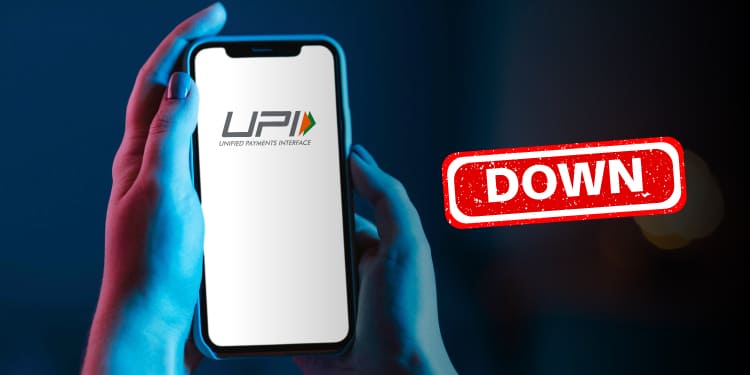UPI Outage Disrupts Transactions for Millions Across India
Millions of Indian users faced severe difficulties in making online payments as the Unified Payments Interface (UPI) system experienced a widespread outage. The disruption, which began in the afternoon and peaked in the evening, affected major digital payment platforms, including Paytm, Google Pay, and PhonePe. Users reported being unable to transfer funds, complete transactions, or even access their UPI-linked banking services.
According to real-time reports from Downdetector, the outage caused over 64% of complaints related to fund transfer failures, while 28% of users experienced payment processing issues. An additional 8% of users reported app-related malfunctions, further exacerbating the frustration of millions relying on UPI for seamless digital transactions.
NPCI Yet to Officially Address the Issue
The National Payments Corporation of India (NPCI), which operates and manages the UPI infrastructure, has not officially acknowledged the outage at the time of writing. However, preliminary reports suggest that the disruption was caused by an unforeseen technical glitch. Some affected users have received notifications stating that any deducted amounts will be refunded, but official confirmation remains pending.
This marks the second major outage within two weeks, raising concerns about the stability and reliability of India’s most widely used digital payment system. While digital transactions have surged exponentially over the past few years, repeated service interruptions indicate an urgent need for infrastructure improvements.
SBI and Other Banks Also Face Service Disruptions
The ongoing UPI outage follows a similar disruption reported just a day earlier, on April 1, 2025. The State Bank of India (SBI) and several other leading financial institutions experienced intermittent outages as the financial year came to a close. Many users faced transaction failures due to system updates and routine maintenance procedures.
SBI, India’s largest public sector bank, acknowledged the temporary disruptions in service, attributing them to annual closing procedures. Downdetector recorded a sharp increase in complaints, particularly in mobile banking and fund transfer failures.
Several other banks, including HDFC Bank, ICICI Bank, and Axis Bank, also experienced similar outages, further amplifying the chaos for users dependent on online transactions for their daily financial activities.
NPCI’s Response and Assurances
While NPCI has yet to address today’s UPI outage, it had previously stated on April 1 that transaction failures were primarily due to bank-specific technical issues and not a failure of the core UPI system.
“Today due to the financial year closing, some of the banks are facing intermittent transaction declines. The UPI system is working fine, and we are working with the concerned banks for necessary redressal,”
NPCI had posted this message on social media platform X, reassuring users that the disruptions were temporary. However, with two consecutive major outages affecting digital transactions, users remain skeptical about the robustness of the UPI infrastructure.
Why Are These UPI Outages Happening?
Several factors might be contributing to the frequent disruptions in UPI transactions:
- Increased Transaction Load – The volume of UPI transactions has surged significantly in recent years, putting immense pressure on banking and NPCI servers.
- Financial Year-End Maintenance – Banks often perform critical updates at the end of the financial year, leading to temporary outages.
- Technical Glitches & Software Bugs – With multiple banks and payment gateways interacting within the UPI system, software glitches can lead to unexpected failures.
- Cybersecurity Threats & Server Overload – With increasing cyber threats, security protocols and protective measures sometimes cause temporary service disruptions.
User Reactions and Social Media Outrage
As expected, the outage sparked outrage on social media, with frustrated users expressing their concerns. Many took to X (formerly Twitter) to vent their frustrations, with hashtags like #UPIDown, #PaytmNotWorking, and #GooglePayIssues trending within hours.
Several businesses that rely on UPI for daily transactions reported revenue losses due to the outage. Small retailers, food delivery services, and e-commerce platforms faced payment failures, leading to canceled orders and customer dissatisfaction.
Recurring Issues Raise Concerns Over UPI’s Reliability
This latest disruption has once again raised serious questions about the reliability of India’s digital payment ecosystem. With UPI being the backbone of cashless transactions in the country, even short outages can significantly impact businesses, consumers, and financial institutions.
Industry experts are now calling for enhanced server capacity, better failover mechanisms, and more robust contingency plans to prevent future disruptions. The government and financial regulators must ensure that India’s digital payment infrastructure keeps pace with the rapidly increasing demand.
What Should Users Do During a UPI Outage?
If you are experiencing issues with UPI transactions, here are some immediate steps you can take:





Final Thoughts: A Wake-Up Call for India’s Digital Payments Ecosystem
While digital payments offer convenience and efficiency, recurrent outages highlight the urgent need for a more resilient system. With millions relying on UPI for daily transactions, ensuring its seamless operation should be a top priority for banks, NPCI, and regulatory bodies.
For now, users can only hope that necessary measures are taken to prevent further disruptions. More updates will follow as the situation develops.
Stay tuned to Insight Tech Talk for the latest updates on technology, digital finance, and fintech innovations.













































